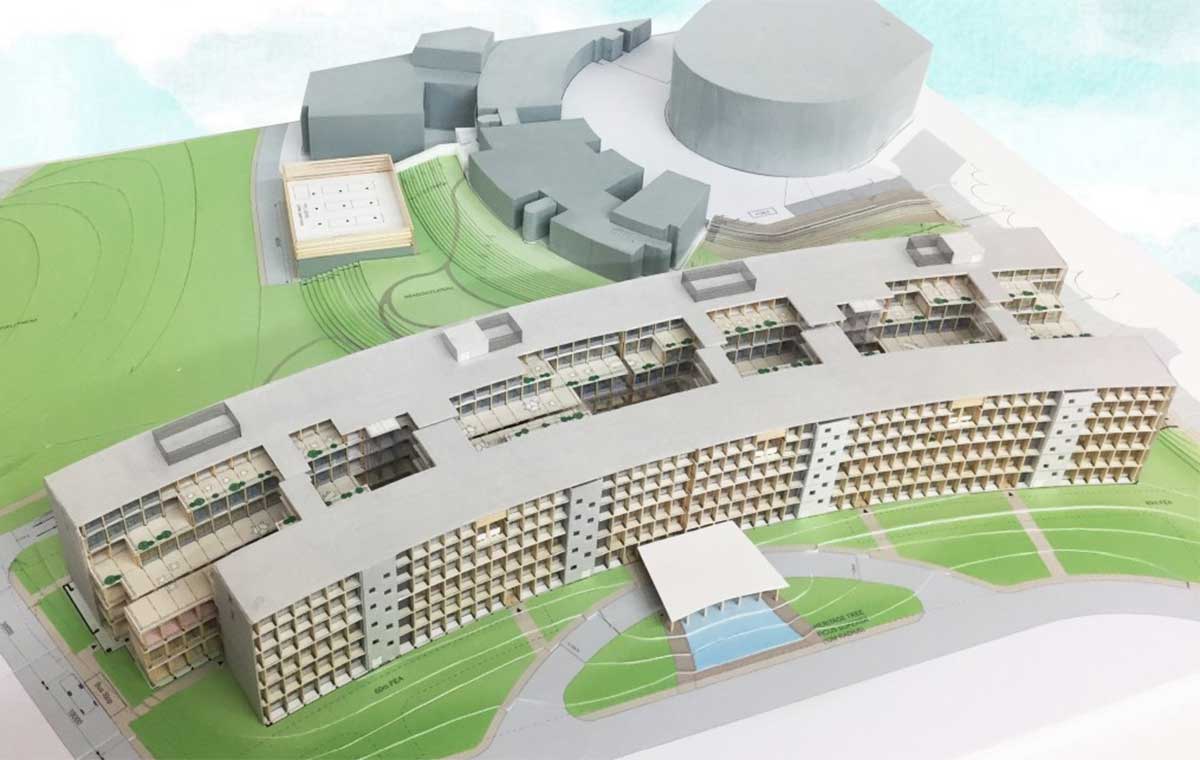
One of the largest wooden buildings in the world is being built in Singapore with CLT by Stora Enso.
The Nanyang Technological University (NTU) in Singapore is adopting sustainable materials and innovative construction methods to develop its campus. The latest project, Academic Building South (ABS), is a true showcase of sustainable construction and largely utilising Stora Enso CLT to be the new home for Nanyang Business School. At 40,000 m2, it will be one of the largest wooden buildings in Asia upon completion later this year.
Erkki Välikangas, Stora Enso Building Solutions Sales Director in Asia says “Following the SMU campus completed in 2019, this is already second significant learning environment with wood to Singapore. I am really happy to see increasing number of projects completed with sustainable, renewable wood in this region.”
Wood grows back
Building with massive wood supports the Singapore government’s commitment on 2030 Sustainable development agenda with special focus on building sustainable cities. According to the Building and Construction Authority (BCA), it reflects the continuing transformation of Singapore’s built environment sector.
The six-storey NTU Academic Building South is designed using a combination of Cross-Laminated Timber (CLT) for slabs and Glued Laminated Timber (Glulam) for beams and columns.
Erkki highlights “Wood used in this project is grown in sustainable managed forests and prefabricated already at the mill for on-site assembly. We will deliver over 7000m3 of CLT for the project. Despite the great volume, it only takes just over one hour to grow back the same amount of wood in Austrian forests. To safeguard the future growth and raw material for wooden construction, we replace the harvested forest with new one,”
“Wooden buildings also create a carbon storage for their whole lifetime. In addition, using wood reduces dust, debris, and noise pollution on site, and it is faster and requires less labour than traditional building methods,” Erkki adds on the benefits of building with wood.
Designed for better learning
The new NTU building also showcases what can be achieved with wood in design. Wood adds a warm feeling and increases biophilia, the connection to nature indoors, creating an environment supporting learning and discourse. An increasing number of studies show that using wood also has wellbeing benefits that can boost learning and concentration.
“Wood was selected as the construction material early on at the project. This enabled a good position to take benefits of wood into use in full scale,” Erkki says.
Expected to be completed in 2021, the building will feature 25 smart classrooms welcoming the next generation to learn in a wooden environment.


